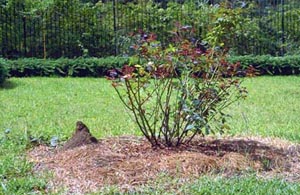Native Fire Ants: The Fiery Threat Lurking in Your Yard This Spring
- yourbugman
- May 1
- 2 min read
Springtime in Indian River County is beautiful, but it comes with its challenges—like the rise of native fire ants. These aggressive pests can quickly turn your yard into a hazard zone, especially for children and pets. At Peyton’s Pest Prevention, we’re here to help you understand the threat and protect your home from these fiery invaders.
Quick Identification Guide:
Appearance: Reddish-brown ants, 1/8 to 1/4 inch long.
Behavior: Build dome-shaped mounds, often in open, sunny areas like lawns or near sidewalks.
Threat: Their painful stings can cause welts and, in some cases, severe allergic reactions.
Why They’re a Problem: Native fire ants are more than just a nuisance—they’re a health risk. Their venomous stings can trigger allergic reactions, and their aggressive swarming behavior makes them difficult to control. They thrive in Florida’s warm, moist climate, making Indian River County a prime target for infestations.
Prevention Tips:
Lawn Maintenance: Keep your grass trimmed and remove debris where ants can nest.
Moisture Control: Avoid overwatering your lawn, as fire ants prefer moist soil.
Inspection: Regularly check your yard for mounds and treat them promptly.
Sealing Entry Points: Prevent ants from entering your home by sealing cracks and crevices.
Professional Solutions: While DIY treatments may temporarily reduce the number of ants, they rarely eliminate the colony. Peyton’s Pest Prevention offers specialized fire ant treatments that target colonies at their source, ensuring long-term protection. Our family-friendly, tough-on-pests solutions keep your yard safe for your loved ones.
Call to Action: "Don’t let fire ants ruin your spring! Add fire ant treatment to your pest prevention plan today. Call (772) 801-6895 or email peyton@PeytonsPest.com to schedule your service. Existing customers can easily add this service through our client portal at portal.gorilladesk.com/peytonspest."
Credits:
Information sourced from the University of Florida’s Institute of Food and Agricultural Sciences (UF/IFAS):








Comments